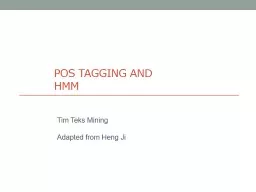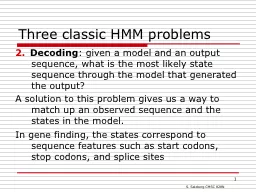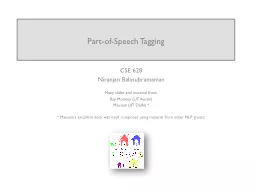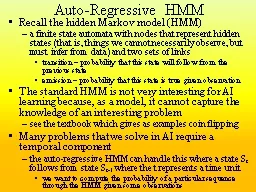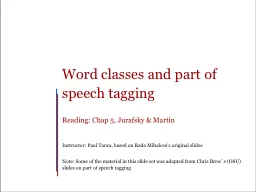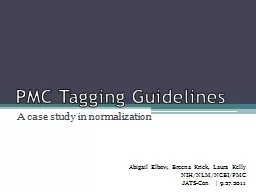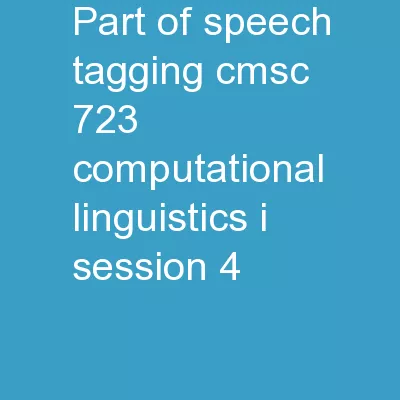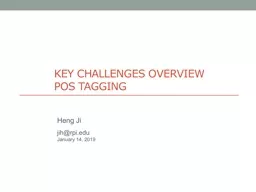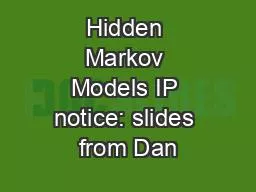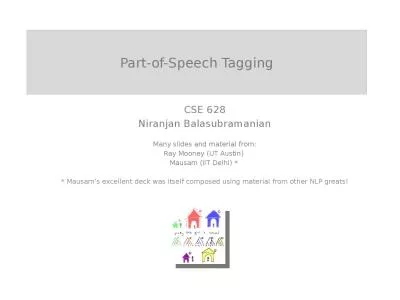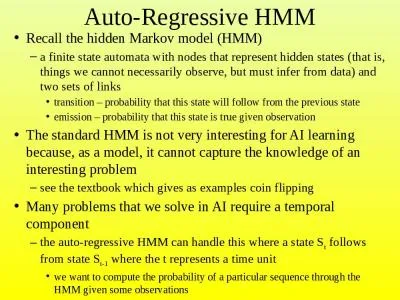PPT-POS tAGGING and HMM Tim
Author : conchita-marotz | Published Date : 2019-06-29
Teks Mining Adapted from Heng Ji Outline POS Tagging and HMM 3 39 What is PartofSpeech POS Generally speaking Word Classes POS Verb Noun Adjective Adverb Article
Presentation Embed Code
Download Presentation
Download Presentation The PPT/PDF document "POS tAGGING and HMM Tim" is the property of its rightful owner. Permission is granted to download and print the materials on this website for personal, non-commercial use only, and to display it on your personal computer provided you do not modify the materials and that you retain all copyright notices contained in the materials. By downloading content from our website, you accept the terms of this agreement.
POS tAGGING and HMM Tim: Transcript
Download Rules Of Document
"POS tAGGING and HMM Tim"The content belongs to its owner. You may download and print it for personal use, without modification, and keep all copyright notices. By downloading, you agree to these terms.
Related Documents

